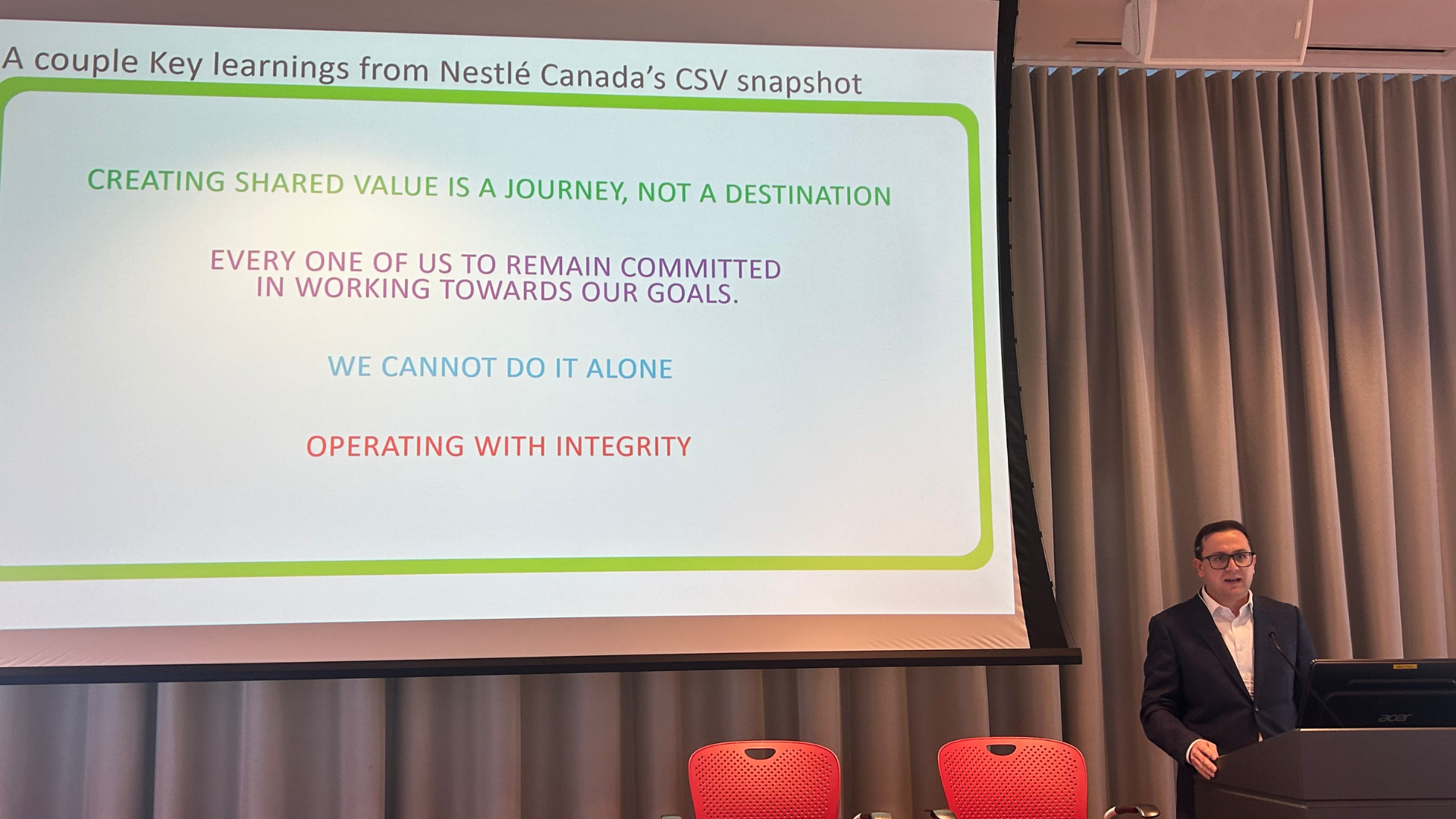Online Learning Q&A
March 18, 2020 ·
Contributed by: Dr. Haniyeh Yousofpour and Sanjay J. Dhebar
Share

Q&A with Dr. Haniyeh Yousofpour and Sanjay J. Dhebar

Dr. Haniyeh Yousofpour and Sanjay J. Dhebar
Dr. Haniyeh Yousofpour is an Assistant Professor at DeGroote School of Business, specializing in Human Resources and Organizational Behaviour.
Sanjay J. Dhebar is an industrial leader teaching Strategy and Marketing in the undergraduate, MBA, and EMBA program at DeGroote School of Business.
They focus on innovative teaching and co-lead the Capstone Project in the MBA/EMBA programs at DeGroote, focusing on applied education. They integrate students’ academic learning from the classroom with industry, through a real case consulting project. Furthermore, they both teach in the DeGroote Blended Learning Part-Time MBA Program, where they split their teaching between the traditional in-person classroom and virtual classes responding to student’s need for flexibility and work-life balance in today’s digital world.
How do online university classes work?
Essentially, instructors are performing the same tasks online as they do when in class, presenting slides and managing discussions with students. The instructor can share their screen for students to see their PowerPoint presentations and hear their voices. They have the choice to turn on their camera for students to see them as well.
Students will log in to the class and are online simultaneously. The instructor can enable their microphone for smaller classes or put them on mute for larger classes. There is also a group chat that everyone can type in and send individual messages to others.
It is possible to have interactions with smaller groups within the class using face-to-face (screen-to-screen) discussion, chatbox, and breakout groups where a few students are put together in a smaller group.
How are online classes different than on-campus ones?
Online classes are easier to manage for large classrooms. Many online tools enable instructors to lead a more interactive course beyond a one-directional lecture, deliver a customized classroom for smaller groups, and students can build more robust relationships with each other.
When running an online class, instructors can easily assign students into random groups to have case discussions, which is challenging to manage for large on-campus courses. Also, online platforms enable instant polling, which is a great feature to get students’ thoughts on a topic and share the results right away.
Most importantly, individuals can attend an online class even if they are not feeling 100% healthy, as they can participate from the comfort of their own home.
Is online education as effective as face-to-face instruction?
Online education complements in-class learning as it adds flexibility to the learning experience. For classrooms that require active engagement and hands-on activities, face-to-face interaction can be more productive. When online, it is crucial to facilitate extended discussions to increase engagement and build on the ideas that encourage all students to participate.
What is it like to participate in an online classroom?
For those new to using online learning, it feels like you have a CP24 screen on your PC or laptop. Everyone is navigating between features and tools, and instructors are also managing students.
The portal will have the list of participants showing if their video or microphone is on. The instructor has the choice to turn on their own video and voice. It will have a feature to share the screen with participants. There is a chatbox that everyone can type in to send a message to the entire class or directly to another attendee. More advanced features allow instructors to send students to smaller groups (random or assigned), create a poll that students can respond to, and give students the capability to share their screen.
What benefits does online learning provide to students?
Online education provides an accessible alternative to the classroom experience. Students have embraced this learning platform and can quickly adapt and take advantage of this option.
Students can access education from anywhere if they have a device and internet. Also, most learning management tools meet accessibility requirements for a more inclusive learning environment.
In our experience, by keeping it simple, adding a few engaging activities, and adjusting our delivery for an online platform, students appreciate the flexibility to attend a class from anywhere. More than 1,000 students from undergraduate to graduate programs in DeGroote have successfully accessed digital learning.
What tools and technology does DeGroote use when teaching online?
For online teaching, the most common tools are Zoom, WebEx, Teams, and A2L. Instructors also use Tophat, Piazza, Slack, and other function-specific tools.
What technical skills do online students need?
Students need access to a computer and the internet. They are the passengers; it is no different than in or out of the classroom. The instructor leads the session and incorporates various activities for the students. Students will be able to participate if they have access to a digital device.
How do we communicate and collaborate online?
The key is to collaborate. Using features like breakout groups, annotate, and whiteboards are essential to incorporate to unsure a valuable experience. These features allow students to be interactive and engaged in the learning experience. The use of polls to ask different questions with options and sharing the results engage the students.
How do we continue to build a sense of community?
Student peer learning can be encouraged by using various tools. The tools, as mentioned earlier, will help engage and connect students during the online lecture. For instance, instructors can pose a question on the discussion board for students to respond to and provide feedback to each other. Instructors can upload videos, manage quizzes, set up discussion boards, and other features to support the learning.
How does online learning help students stay relevant in this quickly changing world?
Virtual communication is today’s reality. More employers have virtual teams, hold online meetings, and have adopted telecommuting. Our graduates need to know how to perform in such an environment.
Recent circumstances encouraging social distance is an excellent example of why digital communication is an essential part of business continuity.
Final thoughts?
We are living in a digital era. Embracing online teaching is not optional; it is a necessity. Instructors can take a gradual approach using some of the online tools to complement their in-person instruction. This transition can start by incorporating some of the devices in the class and then being prepared to deliver lectures online using slides and speaking over them when necessary, then graduating to having a full engagement session online. Building connections online is only one click away.
















